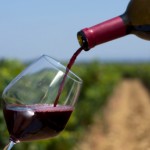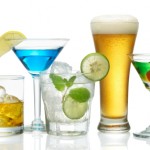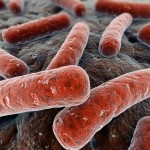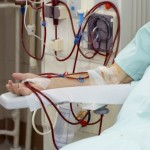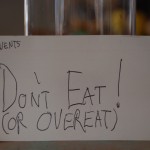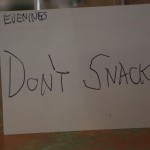I have two series of posts going, but couldn't resist the article I found in the New York Times while riding a recumbent bike in the gym. The title alone, "A Hard Turn: Better Health on the Highway," was enough to grab my attention.
The first story was typical, a trucker driving long hours every day, eating all the wrong foods, getting no exercise, gaining huge amounts of weight. I found the online abstract of a 2007 Journal of the American Dietetic Association article cited: long-haul truckers of necessity eat at truck stops and of 92 such truckers stopping at a Mid-eastern US truck stop nearly 86% were overweight and 56.5% were obese.
One of our family members used to be a truck driver and I've heard his stories of long days spent behind the wheel, eating greasy foods when he stopped. He's slimmer now and in better shape as his current employment allows him more exercise time and a choice of where and what to eat.
Now that insurance costs are rising sharply, the trucking firms are getting involved and the truckers themselves, there's over three million of them in the US, are coming to grips with the issue out of necessity. One group ran a blood-pressure screening clinic for 2,000 truckers at a truck show. Twenty-one were immediately sent to a nearby emergency room; one had a heart attack before reaching the hospital.
Trucks are involved in 400,000 accidents a year and 5,000 fatalities. I just watched a nearly eighteen minute video on how we, as drivers of passenger vehicles, contribute to those accidents; 70% are caused by the drivers of other vehicles (see link below). Yet many of the ones caused by trucker driver error occur because the trucker has a health problem or falls asleep.
http://www.sharetheroadsafely.org/cardrivers/Unsafe-Driving-Acts.asp
Some truckers are taking steps to decrease their weight and its accompanying risks for themselves and those who share the roads with them. A number of companies are helping (and perhaps finding a lucrative new client group). I just looked at a website for "Rolling Strong," and found a gym in my area that offers fitness programs for truckers. Others are joining Weight Watchers, a solid organization that my slender wife has belonged to for many years (she says she was "chunky" in high school) or creating their own programs for fitness: one carries a fold-up bike in his 18-wheeler and uses it whenever he stops for a break. Many are cooking in their trucks or even hiring a trainer.
Others joined the Healthy Truckers Association of America, paying $7.50 a month to belong to an organization that is rapidly growing (see link below to Chicago tribune article). That group now offers truckers a prescription drug card enabling its members to save ~60% on meds.
http://healthytruck.org/node/101
I applaud all these moves; if I'm on the road with a large truck or a series of them, I'd like their drivers to be in shape and wide awake.



